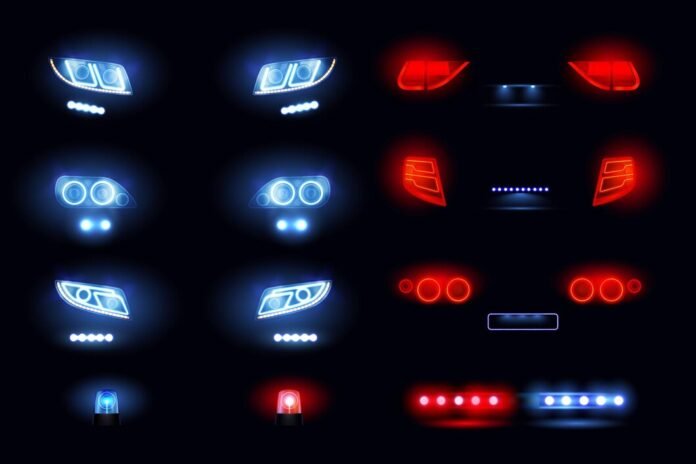Introduction
LED is a semiconductor device, it emits light when current flows through it. The light-emitting diode (LED) is a forward-current-switching PN junction diode that creates light when an electric current flows through it. The amount of energy required for electrons to travel through the band gap of semiconductor influences the energy of the light. There are two types of light-emitting diodes: visible LEDs and invisible LEDs.
LEDs have a number of advantages, including reduced power consumption, a longer lifespan, enhanced physical robustness, a smaller size, and faster switching. Moreover, LED lighting systems produce up to 90% more light than incandescent bulbs.
The quantum theory explains the operation of a light-emitting diode (LED). According to quantum theory, when an electron falls from a higher energy level to a lower energy level, the photon emits energy. The energy difference between these two energy levels is equal to photon energy. When the PN-junction diode is forward biassed, current flows through the diode.
The advantages of using LED are longer lifespan, energy efficiency, improved environmental performance, the ability to operate in cold conditions, no UV emissions, design flexibility, instant lighting, the ability to withstand frequent switching, low voltage operation, dimming capabilities, and directionality.
What Are The Uses Of LED?
LEDs have industrial and day-to-day uses. It’s now an essential lighting tool because of its small size, low energy consumption, long lifetime, and flexibility in use. Let’s check the uses of LED in detail.
Uses Of LED In Displays
Large-area LED displays are used in stadium displays, dynamic decorative displays, and dynamic message signs on roads. Because of their tiny size, minimal maintenance requirements, and low energy consumption, LEDs are utilised as status indicators and displays on a variety of equipment and installations.
Smartphones and monitors require active backlighting. A huge number of LEDs are stacked in an array in an LED monitor. This allows only the sections of the screen that require illumination to be illuminated while consuming less power. Because of the durability of the LED components, this type of display has a longer expected lifespan, which further reduces the amount of power required.
Uses Of LED In Devices
LEDs are used as flashlights in cameras and mobile phones. Because they are tiny, sturdy, and require minimal power. LEDs provide infrared illumination for night vision in security cameras. LEDs are used as backlights and indicator lights in current smartphones and tablet computers.
Barcode scanners are the most common machine vision application. Many of these scanners use red LEDs. LEDs are excellent for machine vision because they provide a portable, dependable source of light.
Uses Of LED In Communication
LEDs have the ability to turn on and off millions of times per second. This quality enables extremely high data bandwidth. Because of this, visible light communication (VLC) has been proposed as a replacement for radio communication.
Assistive listening devices use arrays of infrared LEDs to broadcast sound to users’ receivers in numerous theatres and other public venues. Light-emitting diodes are used to send data through many types of fibre optical cables. LEDs are frequently used in optical fibre and free space optics communications.
Uses Of LED In Vehicles
LEDs have good visibility in harsh sunlight due to their high brightness and focus. Because of this and short switching times, LEDs are used in car brake lights and turn signals. LED lighting is used in automobiles, motorbikes, and bicycles. LEDs are utilised in parking garages and on poles. Traffic lights are becoming more common as a result of the considerable energy savings that LED technology can give.
Uses Of LED In Circuits
LEDs are used as a medium-quality voltage reference in electrical circuitry. The forward voltage drop can be used in place of a Zener diode in low-voltage regulators. LEDs offer design advantages since they may produce substantially thinner lights.
Recommended Articles:
Uses of Microscopes
Definition, Features, and Uses of Plane Mirrors
Uses of Rectifier and their Applications
What is a Variable Star and Its Types
Value Of Plancks Constant
Physics plays a crucial role in our daily lives, from the technology we use to the medical treatments we receive and everything in between. Some of the most important discoveries in physics include the laws of motion and gravitation, the theory of relativity, and the discovery of the Higgs boson particle. Physics advances our understanding of the universe by providing a framework for understanding the behaviour of matter and energy and by making predictions about the behaviour of these systems. Yes, anyone can study physics, regardless of background or field. Physics is an interdisciplinary field that draws on a wide range of knowledge and skills. Studying physics can lead to a deeper understanding of the world around us, as well as opportunities for careers in a wide range of fields, including engineering, medicine, energy production, and more. Interdisciplinary physics uses physics in other fields like biology, computer science, and economics. Researchers use physics to study and solve problems in their respective areas. For example, biophysics uses physics to understand biological systems.”
What is the importance of physics in our daily lives?
What are some of the most important discoveries in physics?
How does physics advance our understanding of the universe?
Can anyone study physics?
What are some of the benefits of studying physics?
What are interdisciplinary physics uses?
